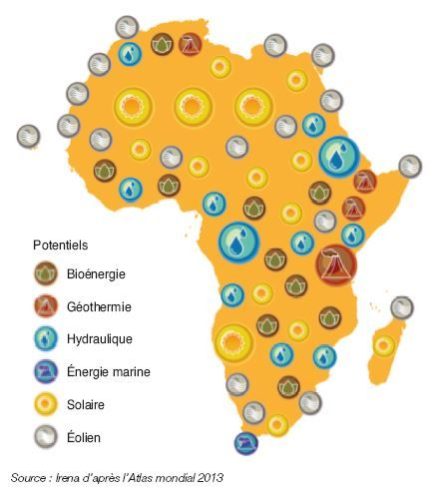Les énergies renouvelables (ENR) sont essentielles à la transition énergétique, car elles permettent de réduire les émissions de gaz à effet de serre et de lutter contre le changement climatique. Cependant, la production d’ENR est variable, car elle dépend des conditions météorologiques. Cela pose un défi majeur pour l’intégration des ENR au réseau électrique, car […]
The solar cadastre is a mapping of a territory that highlights the solar energy that reaches the roofs over an average year. Usually financed by a local authority, this mapping is made available to the public using geographic information systems (GIS), in order to learn about the solar potential of buildings, and thus to know […]
The Solar Atlas is a platform that contains databases relating to information (maps or archived records) on the solar field (GHI, DNI, GTI, etc.) from different places around the globe. these Solar Atlases are accessible through an online web interface, we list below the most famous platforms: ✔ Solar Atlas MASEN; ✔ Global Atlas IRENA; […]
Introducing a large share of RE (Renewable Energy) into a country’s electricity mix requires long-term planning. For example, Morocco’s energy ambitions are sizeable. The share of renewable energies will represent 52% in 2030 (43% in 2020, then 47% in 2025), according to the evolution of the capacity and the electricity mix. Increasing the share of […]
The study of renewable energies is essential for the territories, it is an integral part of the development of a transition strategy and contributes to the coherence and robustness of the energy and climate trajectory of the territory. Thus, it makes it possible to have and cross data to make relevant choices adapted to the […]
To accurately estimate the energy produced from a power plant, information on the site’s meteorological resource is needed, in addition to the layout and technical specifications of the plant components. Sophisticated software is often used to model the complex interaction of these different parameters. Although a number of software packages can predict the energy performance […]
In a context marked by climate change, the need to “decarbonize energy” by getting rid of all fossil fuels (coal, oil and natural gas) has become a strategic axis in the global energy transition policy. Faced with this climate emergency, sectors based on renewable energies (mainly wind, CSP and photovoltaic) are in full expansion, yet […]
LCOE “Levelized Cost of Energy” or “actualized cost of energy” represents all the costs of the installation (initial investment: CAPEX and annual operating expenses: OPEX) compared to the energy produced by the installation on a given period of time (duration of the contract or lifetime for example). This cost is usually given in monetary unit […]
A virtual power plant or VPP (Virtual Power Plant) is a combination of small energy sources (or available energy storage systems), which are activated and optimized by a computer system within a SMART GRID network, in order to carry out operations in the service of an electricity distribution operator or purchase options from a producer […]
With the perpetual rise of the share of renewable energies (in particular solar and wind energy) in the energy mix, the vulnerability of the electricity grid will become increasingly important in the face of the short-term variability of these intermittent resources, and therefore Consequently, the reliability of the renewable energy production forecast will be an […]










